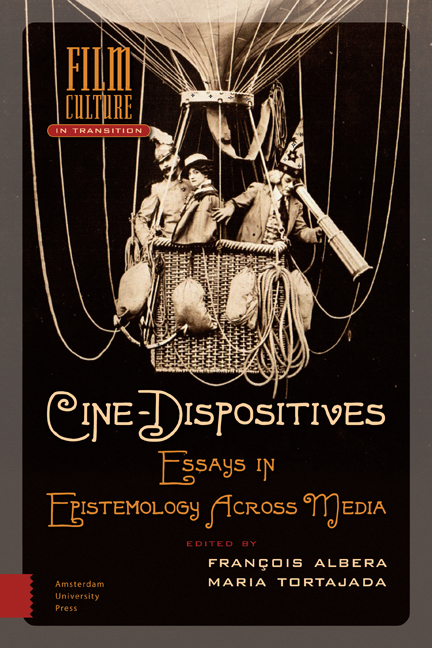Between Paradoxical Spectacles and Technical Dispositives: Looking Again at the (Serpentine) Dances of Early Cinema
Published online by Cambridge University Press: 10 February 2021
Summary
When trying to grasp the complex relationships between dance and moving images, during the emergence of the cinematic medium, one can hardly avoid noticing the necessity of investigate, once again, the films dedicated to the famous number of “serpentine” dance developed and started in 1892 by music-hall performer Loïe Fuller. The phenomenal craze created by this original stage spectacle ended up imposing it as one of the motifs characterizing artistic expression at the turn of the twentieth century. Countless variations have attested to this, at least until the First World War, in areas as diverse as sculpture, painting, architecture, furniture, or even poetry and literature. Over the period, the serpentine dance continuously exerted its influence over the most innovative aesthetic currents, from the heirs of Symbolism through the Futurists to decorative trends typical of Art Nouveau. Seeking to explain this stunning success, several studies have shown how Fuller's performances were made possible by important epistemological changes following the emergence of a large ensemble of scientific and technical dispositives. On the one hand, the serpentine dance, like other spectacles designed by Fuller, featured a stylized apprehension of a form of mobility constantly tending toward abstraction, on the model of new rationalized perceptions of the human body. On the other hand, the same Fullerian shows expressed a symbiosis, unknown until then, between artistic and technological dimensions of art and technology. Indeed, through their incorporation of projections of artificial light with multiple changing colors, of pyrotechnical effects, of complex mechanisms or even of the combinations of a mobile magic lantern, they tapped into the most spectacular signs of a modern expressivity firmly anchored in the new world of electricity, machines and industrialization. This is how the famous quotation from Stéphane Mallarmé should be understood: in a text he reprinted in his Divagations (1897), he writes of Fuller's show as the representation of an “inebriation by art” and “simultaneously, an industrial accomplishment.”
This remarkable articulation between the dimensions of aesthetic emotion and scientific technicality has largely been acknowledged over the past twenty years, not only within cultural studies, but also on the occasion of large exhibitions devoted to the history of visual arts.
- Type
- Chapter
- Information
- Cine-DispositivesEssays in Epistemology Across Media, pp. 249 - 274Publisher: Amsterdam University PressPrint publication year: 2015



